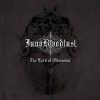Triskelion Patch
Distribution item.
A triskelion or triskeles is an ancient motif consisting of a triple spiral exhibiting rotational symmetry.
The spiral design can be based on interlocking Archimedean spirals, or represent three bent human legs.
The triple spiral is found in artefacts of the European Neolithic and Bronze Age
with continuation into the Iron Age especially in the context of the La Tène culture and related Celtic traditions.
The actual triskeles symbol of three human legs is found especially in Greek antiquity, beginning in archaic pottery, and continued in coinage of the classical period.
In the Hellenistic period, the symbol becomes associated with the island of Sicily, appearing on coins minted under Dionysius I of Syracuse beginning in c. 382 BC.[1]
The same symbol later appears in heraldry, and, other than in the flag of Sicily, came to be used in the flag of the Isle of Man (known as ny tree cassyn "the three legs").[2]
Greek τρισκελής (triskelḗs) means "three-legged".[3]
While the Greek adjective τρισκελής "three-legged [e.g. of a table]" is ancient, use of the term for the symbol is modern, introduced in 1835 by Honoré Théodoric d'Albert de Luynes as French triskèle,[4] and adopted in the spelling triskeles following Otto Olshausen (1886).[5]
The form triskelion (as it were Greek τρισκέλιον[6]) is a diminutive which entered English usage in numismatics in the late 19th century.[7][8]
The form consisting of three human legs (as opposed to the triple spiral) has also been called a "triquetra of legs" or triskelos, triskel.[9]
See also
|
8.99€
Tape |
6.99€
Tape |
5.99€
Merchandise |
6.99€
CD-R |
5.99€
Merchandise |
|
9.99€
CD |
9.99€
CD |
5.00€
Merchandise |
6.99€
Tape |
5.99€
Tape |






